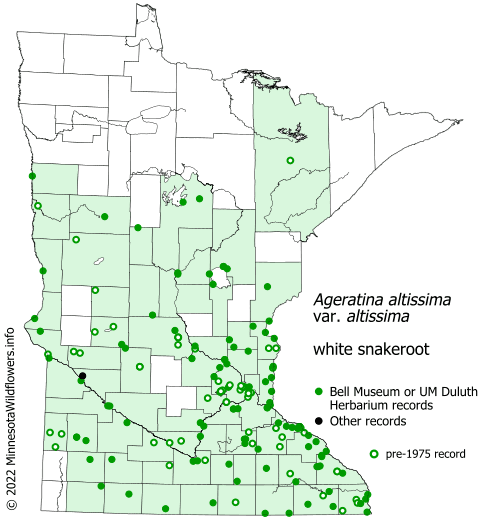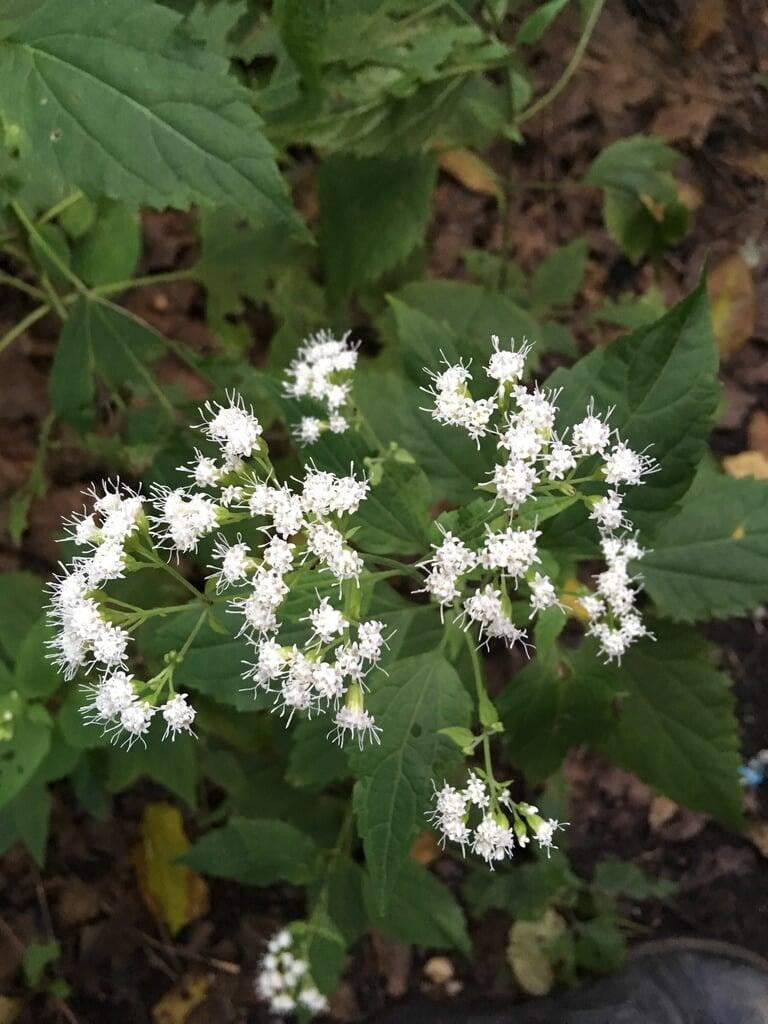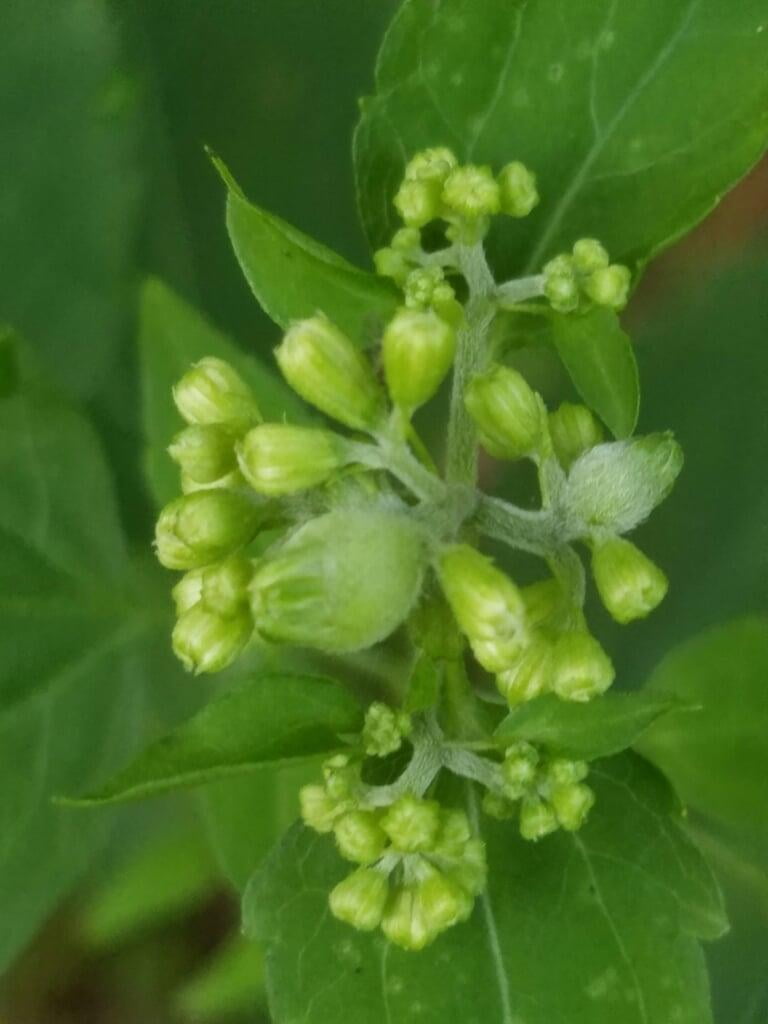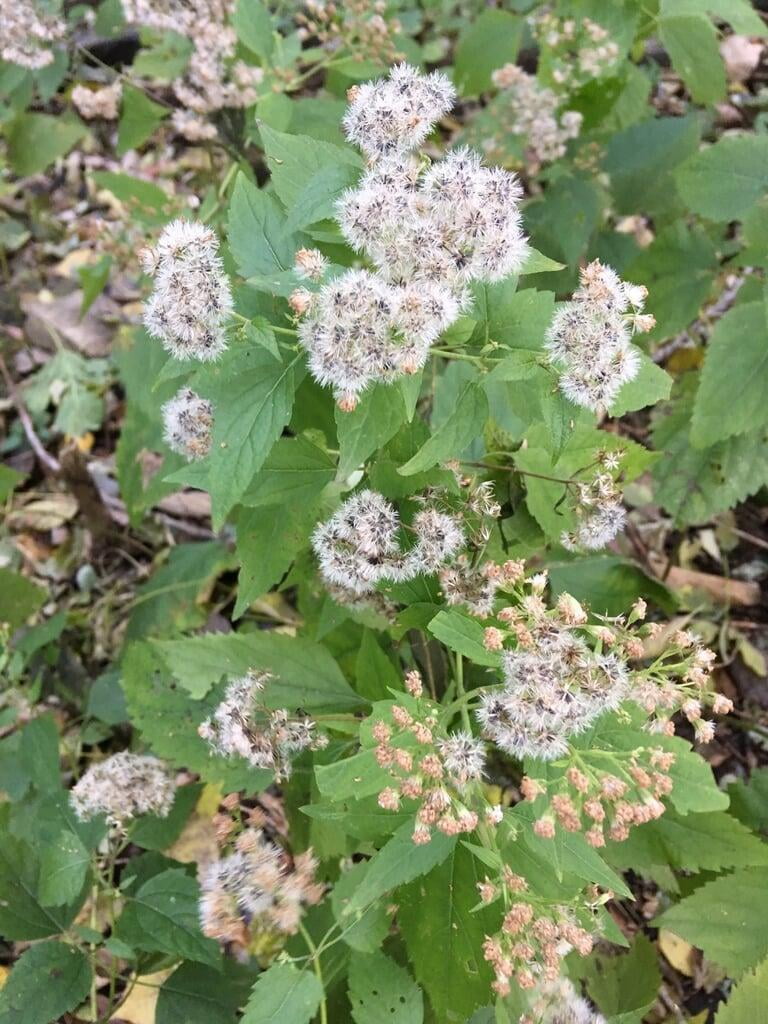Allium canadense
White Snakeroot Description:
geratina altissima, commonly known as white snakeroot, is a herbaceous perennial plant that is native to eastern and central North America. It typically grows to a height of 2-4 feet (60-120 cm) and has a spread of 1-2 feet (30-60 cm). The plant produces a branching, upright stem that is covered in fine hairs.
The leaves of Ageratina altissima are ovate in shape and are arranged opposite each other on the stem. They are typically 3-6 inches (7.5-15 cm) long and 2-4 inches (5-10 cm) wide, with serrated edges and a pointed tip. The leaves are dark green in color and have a slightly hairy texture.
In late summer and early fall, Ageratina altissima produces clusters of small, white flowers at the top of the stem. The flowers are arranged in flattened, branching clusters that can be up to 6 inches (15 cm) across. Each flower has a small, tubular shape and is surrounded by several small, white bracts.
Ageratina altissima is a valuable plant for pollinators, as it provides nectar and pollen for a variety of insects, including bees, butterflies, and moths. However, it should be noted that the plant is toxic to livestock and can cause illness or death if ingested.
Native Range:
White snakeroot is native to Minnesota and many central and eastern states.
Standard Plant Information:
Plant Height: 1' - 4'
Bloom Time: July - October
Preferred Habitat: Prefers part shade to shade in deciduous woods.
Sowing:
For most homeowners, the best option is to scatter seed on the ground by hand broadcasting at a minimum of 16-64 pls ounces per acre. For even coverage, we recommend that you broadcast seed in perpendicular rows across the site to ensure even coverage.
You’ll want to broadcast any grass seed first, which will get raked into the soil lightly. Next, it is ideal to mulch the area lightly with either a clean (no seed) straw or preferably with our native Little Bluestem straw, sold at our retail garden centers. After a light mulching is complete, now it’s time to broadcast your native wildflower seeds, which should not be raked into the soil. A good rain or watering is sufficient to cover the seed.
Planting:
Simply dig a hole in the soil slightly larger than the plant’s roots. Ensure that the soil line of the plant is maintained during the transfer (i.e. the plant should be at the same level with the ground as it was in the pot). Pack any loose dirt back around the plant and make sure you water it well the same day to ensure it has the best chance of survival.









